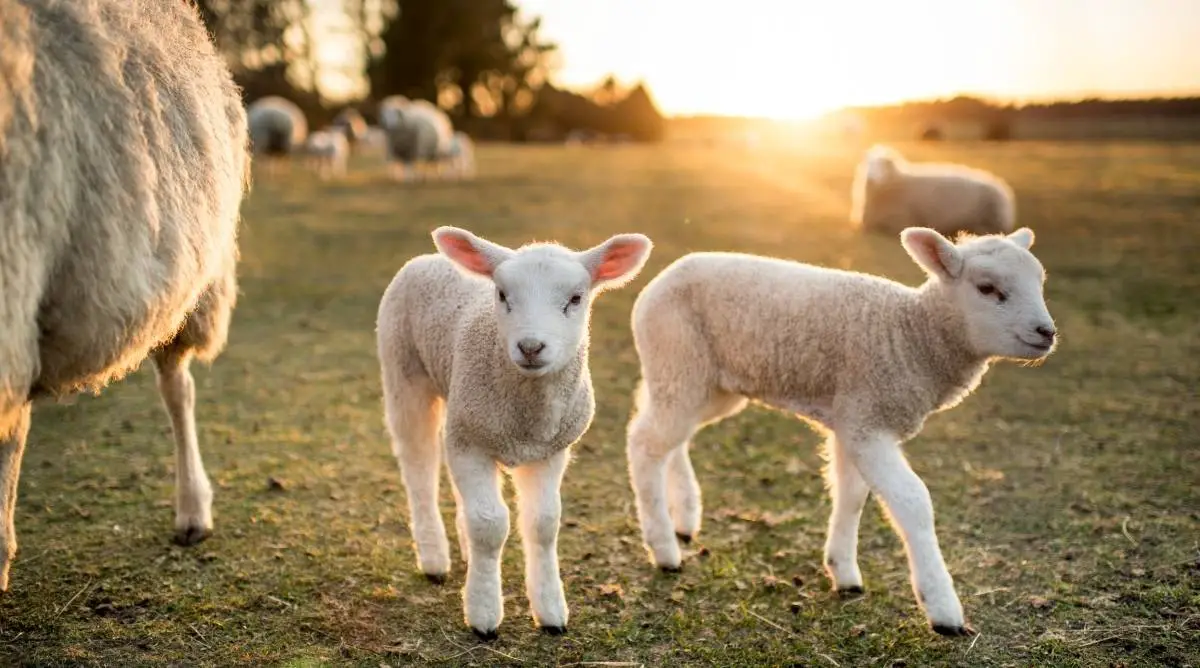Preparing for lambing season involves managing ewe health, vaccinations, and nutrition, as well as gathering appropriate equipment for birthing. Be available and present for your ewes as they are giving birth in order to maximize the chances of a healthy outcome for both ewe and lamb.
Table of Contents
Choosing Early Lambing vs Late Lambing
The first decision to make as you plan your lambing season is early vs late lambing. Most farmers choose to lamb either in the winter (early lambing) or spring (late lambing).
Each method has its advantages:
Early lambing (winter)
- There tend to be more workers available to help with winter lambing since there are fewer competing activities happening on a farm during winter.
- Lambs tend to sell for more when they can reach market weight by the spring, which requires them to be born in the winter.
Late lambing (spring)
- The cost of production is likely lower since lambs are likely to be able to graze in the pasture rather than eating feed.
- There is less pressure to monitor lambs closely since temperatures are not as low.
- Sheep tend to be healthier as they can spend more time outside rather than inside staying warm.
Prepare for Lambing Season
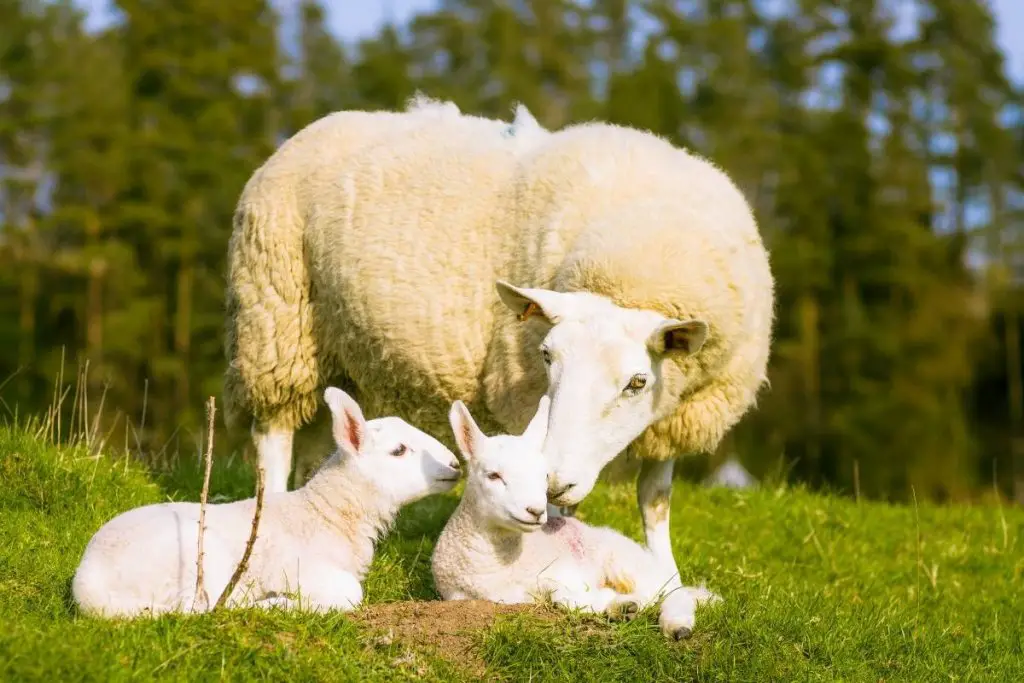
Start by preparing ewes with proper nutrition. This will ensure they’re in the best condition to deliver healthy lambs and recover quickly.
Have a vet take the ewes’ blood samples about 4-6 weeks before lambing to analyze their medical statuses. This will give insight into what type of diet is best for them.
Some ewes need supplementation to:
- Boost their body condition
- Increase lamb survival chances
- Ensure they deliver healthy lambs
- Prevent pregnancy toxemia
It’s best to shear ewes pre-lambing to ease suckling and encourage sheltering. Moreover, this creates ample shed space and allows ewes to access feeders easily.
Other ewe preparation practices include:
- Vaccination (Tetanus and Clostridial)
- Deworming and defluking
- Tagging
Gather the Right Lambing Equipment and Supplies
Key lambing supplies include:
- Disinfectant
- Iodine/Triodine
- Obstetrics (OB) sleeve gloves
- Leg snares
- Feeding tubes
- Colostrum and milk replacer
- Sterilization equipment
- Obstetrical lubricant
- Bucket, warm water, soap, towels
- Disposable syringes, antibiotics, and analgesics
- Heat lamp (lamb hotel)
- Feeding bottles and nipples
You must also have adequate lambing facilities. Prepare a spacious and well-ventilated pen where ewes can stay until lambing is complete.
Setting up lambing jugs will also help house the ewes and their newborn lambs and encourage their bonding while keeping them close to the rest of the flock.
Be Present during the Sheep Birthing Process
It’s important to be present when the ewe goes into labor.
Make sure to have experienced people to assist you, especially if it’s your first time. During the birthing process, ensure your ewe has everything she needs, including fresh drinking water and a sterile birthing area.
Look out for Signs that Your Ewes are Going into Labor
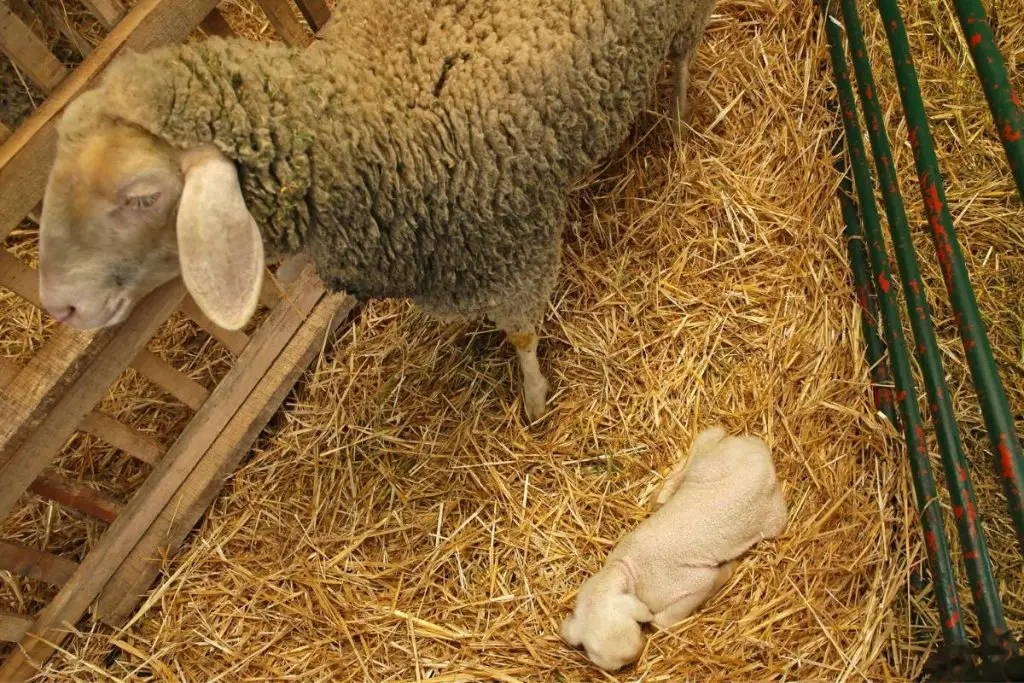
Paying close attention to your ewes pre-lambing allows you to detect signs that the ewes are going into labor.
Signs to look out for include:
- Arched tail end
- Dropping
- Vaginal discharge
- Discoloration of the vulva (from light to dark pink)
- Bulging udder that starts producing colostrum
- Laying down and contracting
- Pawing on the ground
- Loss of appetite
Help Your Ewes Give Birth
Most ewes give birth unassisted, but you can help them deliver if necessary.
Here are the instances when you should assist the ewe:
- If hard labor persists for more than 30 minutes
- If there’s an abnormal presentation (hung lamb)
- Unusual ewe behavior
When assisting in delivery, handle the ewe gently and seek professional help if things get out of hand. In addition, observe hygiene practices by wearing arm-length disposable plastic gloves or disinfecting your hands and arms.
Handling Stillbirths
In unfortunate circumstances, your ewe might have a stillbirth. Infection is one of the common causes of stillbirths in sheep, including:
- Vibriosis
- Toxoplasmosis
- Leptospirosis
- Chlamydiosis
These usually occur due to poor hygiene standards, contamination, and pregnancy toxemia.
If one of your ewes has had a stillbirth, remove the dead fetus and its membranes. Ensure you wear protective gear when handling them.
Next, disinfect the lambing pen.
After attending to the ewe, remember to take the dead fetus and its membranes for analysis in a veterinary laboratory.
It’s also essential to keep other animals from accessing the lambing pen, as they could contract pathogens if the stillbirth occurred due to infections.
You can also have a vet examine the ewe to determine its health status. Their findings will give more insight into how to prevent lamb losses in the future.
What a Normal Birth Looks Like
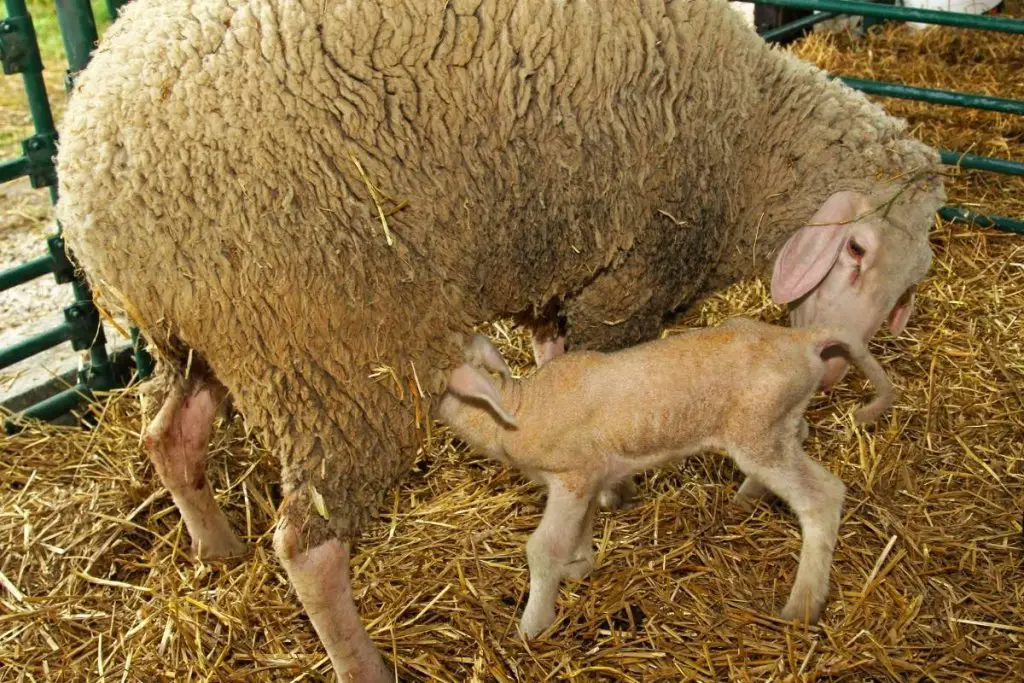
Normal births happen at the end of a ewe’s gestation period at around 142-152 days.
The ewe will typically undergo three labor stages before delivery. The stages of labor are:
- Dilation of the cervix: This stage involves uterus contraction, which causes the cervix to dilate. You will notice the ewe behaving unusually, producing vaginal discharge and frequently straining (every 2-3 minutes). As cervical dilatation progresses, the fetus is pushed out, with the front feet appearing first and the head between the legs. This might last for 3-6 hours.
- Expulsion of the lamb: It involves bursting the water bag and pushing the lamb through the dilated cervix. The uterine contractions increase, and the water bag bursts as it reaches the vulva, expelling a thick fluid. This fluid lubricates the way for the lamb as it is expelled through the vulva 30 minutes later, forefeet first, followed by the head.
- Expulsion of afterbirth: At this stage, the lamb is delivered and the placenta follows. In multiple births, the placenta is expelled after each delivery.
Why do Humans Help Ewes Give Birth?
Humans help ewes give birth to increase the survival rate of both ewes and lambs.
Some sheep breeds, including Katahdin and Dorper, have easier lambing than others. However, any sheep can experience difficulty birthing lambs, so human intervention helps manage the situation.
Humans also use various tools that make the lambing process more manageable, including:
- Towels
- Snares (or lambing cord)
- Obstetrical lubricant or jelly
- Obstetrical gloves
Managing Newborn Lambs
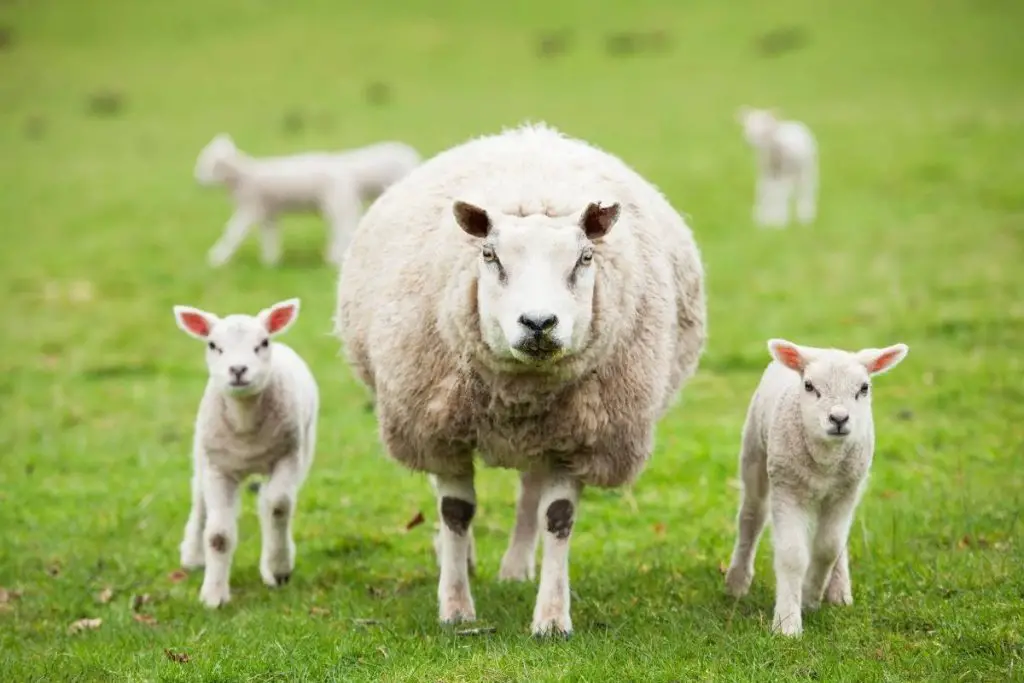
There are a few things to keep in mind in the immediate aftermath of a birth.
- After the ewe delivers, check whether the lamb is breathing. At birth, the newborn’s nostrils are covered by the uterine membrane. Naturally, the dam will lick off the membrane, allowing the lamb to breathe. However, you can assist by wiping the lamb’s nostrils with a rag or towel if the ewe mother is unwilling to do so.
- Clip and dip the lamb’s naval in an iodine solution to prevent infections.
- Ensure that the newborn lamb gets its first colostrum meal. The colostrum is contained in the ewe’s milk and is essential as it has antibodies that will increase the lamb’s survival chances. If a lamb isn’t strong enough to suckle, you can use a stomach tube to deliver warm colostrum directly to its stomach. If the lamb is weak at first but stands up shortly, ensure the ewe’s teats are accessible by stripping off the wax plug. Then let the newborn lamb suckle adequately 30-60 minutes after birth.
- Allow bonding between the ewe and the lamb by leaving them together in their jug pen.
Complications while Lambing Ewes
Common challenges while lambing ewes include:
- Twins and multiple births: Although larger litter sizes are profitable, they also come with challenges. The lambs usually have lower birth weights and less energy at birth. Also, they have lower survival rates due to lower colostrum intake and competition.
- Stillborn lambs: These mainly occur due to womb infections and other complications. Since there’s no remedy for this, you can only prevent future stillbirths by managing proper hygiene, nutrition, and vaccination.
- Ewe runs out of energy: This usually occurs due to prolonged labor. An inadequately fed ewe can also run out of energy during the birthing process.
- Backward delivery: Abnormal fetal position result in backward delivery. If a lamb is turned the wrong way in the womb, birthing will be more difficult and can result in complications or death.
- Starvation/Hypothermia Complex: Newborn lambs can suffer from starvation shortly after birth due to the ewe rejecting the lamb or failing to produce enough milk. This can lead to hypothermia in the newborn lamb, especially if lambing occurs during the cold seasons. Not eating means the lamb cannot generate internal heat to keep warm. Therefore, the body temperatures drop significantly, which can result in death. You can help the lamb by placing a warm covering over them and blowing in warm air using a blow dryer.

